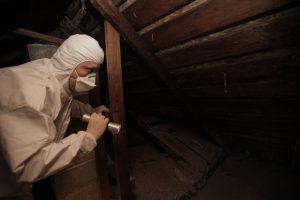“We’re walking away from attics with R-11! It won’t pay back to get them to R-50; it’s insane!” These were the concerns of Scott Daniels, Weatherization Supervisor at the Human Resource Council in Missoula, MT. The trend was upsetting and the frustration was palpable. Scott had been tracking the economic limit of insulation measures in homes in their Zone 6 climate and wanted to know what could be done.
On January 17, 2019 the Department of Energy (DOE) released Weatherization Program Notice 19-4 (WPN 19-4). There were some significant changes to the way DOE allows weatherization measures to be calculated. Many insulation measures were given a lifespan of 30 years, a significant increase over what was previously allowed; fossil fuel heating systems were given a lifespan of 20 years, a 30% increase. The effect of this change in policy will make it more cost effective for these measures to be installed by reflecting a more accurate assessment of their lifespans. This policy change is the re sult of input and assessment from all levels of stakeholders in the Weatherization Assistance Program (WAP).
sult of input and assessment from all levels of stakeholders in the Weatherization Assistance Program (WAP).
An Energy Conservation Measure (ECM) like insulation, to be installed in the WAP, must have a Savings-to-Investment Ratio (SIR) of 1.0 or greater. This means that the energy savings of the measure must be equal to or greater than the cost of the measure. The SIR is calculated with the annual savings, installed cost, and lifespan of a measure which is then trued up to account for inflation. As with any calculation, any of the inputs can affect the output of the equation. In this case, it was the lifespan of the measure that was being assessed. Previously, DOE had capped the lifespan of insulation measures at 20 years. Those in the Weatherization field felt anecdotally that insulation had a longer lifespan than 20 years, but research was needed to support this.
The Energy OutWest (EOW) Technical Committee consulted data from manufacturers, trade associations, and other published research on energy efficiency. The committee provided the research and data needed to demonstrate that insulation would last much longer than 20 years, and a proposal to increase the lifespan of certain weatherization measures was drafted.
A question was posed by a Community Action Agency. It was then reviewed and analyzed by a Grantee Monitor. From there a regional Technical group weighed in and supported the effort. It was then assessed by DOE, a technical consultant, and a national laboratory. The acceptance of this proposal will lead to more insulation and more efficient heating systems being installed in the homes of our nation’s most vulnerable people. It goes to show that if you see an avenue for improvement, it is worth it to follow it up the chain. Community Action Agencies (CAAs) and other local WAP providers serve an integral role in policy change by informing of the impacts on the ground and ensuring policies achieve their intent. Most often we look to what has been completed and look for ways to improve, but in this case it was necessary to assess what had not been reported. This example highlights that DOE and State Grantees can look to the local WAP agencies, the boots on the ground, as a critical partner in continually improving the WAP and the services provided to low-income households.
Jonathan Ballew is the Director of Energy Programs for Rocky Mountain Development Council in Helena, MT. He also serves on the Energy OutWest Board of Directors and Technical Committee. The topic of this blog and many others will be covered at the Energy OutWest Conference in Austin, Texas August 10 – 14, 2020, and Jonathan hopes to see you there!





